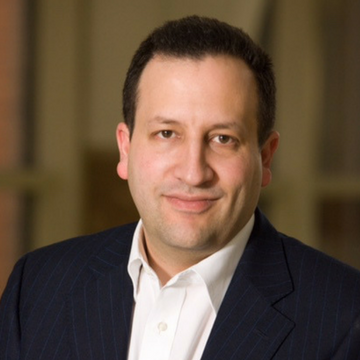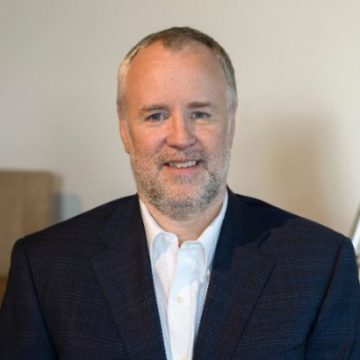Technology is changing the world in dramatic ways — and more quickly than ever before.
One of the big themes at this year’s IP Expo Europe event, which ran for two days at the start of the month at London’s ExCel (and heavily trailed the addition of Digital Transformation Expo from 2019), was how to embrace the uncertainty that’s part of all transformation. In other words, it’s only by taking risks and reimagining how things can work that you ultimately see the reward that tech delivers — in the form of lives and society improved in tangible ways.
If that sounds high-minded, what’s at stake here is that we all need to remind ourselves of the big ambitions behind the work we do. At Citrix, as we explored in our presentations and on our expo stand, setting the bar high, and pushing for hard-to-reach goals, is what it’s all about. Even when working down in the detail of a problem, we should all remember to take a moment to look up and think about what the bigger picture is.
I thought this idea was captured perfectly in the expo’s keynote speech by the retired Canadian astronaut Chris Hadfield, who flew two space shuttle missions and commanded the International Space Station.
Hadfield painted a fascinating picture of the calculated but sometimes terrifying risks taken to get humanity into space and onto the moon. It was what inspired him to try to be part of the global space mission.
“I watched Neil Armstrong’s first moonwalk in 1969,” said Hadfield. “That ability to change everything thrilled me — and the risk-taking, too, as I learned more. Did you know Armstrong only had 16 seconds of fuel left when he landed the Lunar Module manually in a spot that he had to pick out himself, after overshooting the planned landing site? All with the world watching, remember. That’s confidence — and preparation — for you.”
Hadfield talked about the problem-solving side of the challenge, too, which was fascinating.
“When you attempt change, you have an idea of perfection, but you expect and plan for the worst. And it’s what you do when problems emerge that really counts. All the time, astronauts visualise failure: how to deal with it is the essential part of training.”
Hadfield then told the story of a liquid-ammonia leak on the ISS that needed to be repaired with improvisation during a high-stakes spacewalk.
“To be ready for that kind of situation, you need to be perpetually dissatisfied with your own expertise and to practise endlessly,” he said. “This is what gives you the best chance of delivering and turning around problems when they arrive. It’s the same mindset we all need in order to keep delivering on technology’s potential.”
Transformation stories
Across the Citrix-led sessions at IP Expo, there was great story-telling on both days about transformation and how to navigate getting there. Ahead of the expo, you might recall I trailed John Moody’s planned talk on app virtualisation and why individual users need to be given free rein with technology to experiment and express themselves. The session was very well received, and it also illustrated how important it is to keep pushing the boundaries to bring through change quickly, rather than being cautious on users’ behalf and unwittingly delivering something less radical.
Other sessions drew out different challenges. I found it interesting that several explored how even making small changes and joining the dots can quickly add up and deliver a revolution. It’s yet another take on how to push through transformative change that makes a difference. The point here is that all the work behind the scenes, pushing the envelope to make a seamless digital workspace, is fully realised only once users are set up on just the right terms on the platform and not worrying about side issues — from their perspective — like security.
A workspace wonder
Nez Bellis is a lead technologist at Citrix and his session on the digital workspace was an eye-opener, exploring as it did how much transformation can be delivered by using existing technologies and data more productively.
“For individual users, the experience of using a workspace across difference devices that’s simple to navigate and secure and provides a good end-to-end experience, whatever the location, can be a revelation,” said Nez.
“Lots of Citrix customers have been in a state of change, as the shift to the mobile and cloud era unfolds, but the point is that right now Citrix Workspace can deliver across today’s hybrid, multi-device environments, aggregating apps and data beautifully,” said Nez.
In practice, what makes the latest workspaces powerful is the automated intelligence that’s built in for users, Nez noted, plus any-device options that see mobile apps opened up for platforms that were once desktop-only. Out in the real world, Nez gave the example of leaving the office for a meeting and later on logging into the workspace from a pub’s Wi-Fi network.
“When I log in from that pub, I am not connected from a verified IP address, but the system knows I am the same user. In terms of the workspace, it means I get some apps but not all of them. I probably have what I need, though, to be productive and get things done.”
This kind of contextual login and monitoring for individual users is what makes today’s workspace so powerful, as Nez argued. “If you look at the user rather than the environment, you can work so much smarter. Does an individual user visit risky websites occasionally or never? Does he or she look at social media on work time regularly, rarely or not at all? If a login is to a sensitive app is from an unknown IP address, is it worth recording the session or perhaps automatically flagging the login on a management dashboard for someone to assess the risks after the event?”
The underlying context, added Nez, is that globally right now 70% of top companies have digital transformation teams in place with lots on the agenda. The digital workspace is a significant part of that mix, but it’s user support in all its manifestations that unlocks things.
Global networks, future challenges
Getting around the sessions at IP Expo, I should add before I sign off that one of several sessions that I enjoyed from just beyond the Citrix tent was from Al Taylor of CloudDNA. This is a Citrix networking specialist consultancy, rolling out smart networks powered by Citrix ADC (formerly NetScaler) and Citrix SD-WAN (formerly NetScaler SD-WAN).
Al ran a session on day two from the app-virtualisation theatre where he talked about some companies CloudDNA has supported with networking for far-flung branch offices around the world. He walked the room through three customer deployments that overcame different long-haul networking challenges in different ways, and it was fascinating and made me proud about the range of answers we at Citrix are bringing to today’s digital challenges.
It also reminded me of something else that seems amazing: the problems being solved now are ones no-one even dreamed of on the same terms just a few years ago. In five years’ time, what new problems will we be solving that aren’t yet even thought about? It’s an exciting thought — and Digital Transformation Expo 2023 will probably have the answers!




